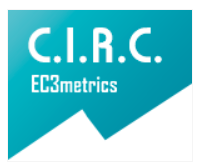El incremento de las alteraciones auditivas en población infantil: una revisión narrativa
The Increase of Hearing Disorders in the Child Population Una revisión sistemática de la literatura Científica
Contenido principal del artículo
El desarrollo del habla, el lenguaje, la comunicación, la cognición y otros aspectos en la infancia se ven profundamente influenciados por la audición. Cuando un niño presenta pérdida auditiva no detectada o no tratada, se reducen los estímulos y se dificulta el desarrollo de habilidades lingüísticas. La falta de atención temprana puede llevar a retrasos en el desarrollo del lenguaje, afectando la capacidad del niño para comprender y comunicarse. La hipoacusia pediátrica es un problema de salud pública que afecta a un porcentaje significativo de niños en todo el mundo. El aumento de la causa de la hipoacusia infantil en diferentes países se atribuye a factores como la falta de conciencia y educación sobre la importancia de la detección temprana, la disponibilidad y acceso limitados a servicios de detección y diagnóstico, la ausencia de programas de detección temprana en algunos países y la necesidad de contar con profesionales de la salud capacitados en el manejo de la audición pediátrica. Todo ello puede afectar áreas fundamentales del desarrollo, incluyendo el lenguaje y la comunicación, el desarrollo cognitivo, sensorial, motor y adaptativo. Por tanto, este trabajo tuvo el objetivo de llevar a cabo una revisión narrativa de la literatura científica sobre la situación de las alteraciones auditivas en la población pediátrica.
Datos de publicación
Perfil evaluadores/as N/D
Declaraciones de autoría
Indexado en
- Sociedad académica
- Bogotá: Corporación Universitaria Iberoamericana
- Editorial
- Bogotá: Corporación Universitaria Iberoamericana
Detalles del artículo
Alenazi, A., Derraugh, G., Levesque, M., Morris, M. I., Shawyer, A. C., Lum Min, S. A., & Keijzer, R. (2021). The prevalence of hearing loss in children with congenital diaphragmatic hernia: A longitudinal population-based study. Journal of Pediatric Surgery, 56(2), 226-229. https://doi.org/10.1016/j.jpedsurg.2020.08.008 DOI: https://doi.org/10.1016/j.jpedsurg.2020.08.008
Ansari, M. S., Sood, A. S., & Gill, J. S. (2022). National infant screening for hearing program in India: Necessity, significance, and justification. Indian Journal of Otolaryngology and Head & Neck Surgery, 74(Suppl 3), 6497-6512. https://doi.org/10.1007/s12070-021-02788-2 DOI: https://doi.org/10.1007/s12070-021-02788-2
Bagatto, M., DesGeorges, J., King, A., Kitterick, P., Laurnagaray, D., Lewis, D., Roush, P., Sladen, D. P., & Tharpe, A. M. (2019). Consensus practice parameter: Audiological assessment and management of unilateral hearing loss in children. International Journal of Audiology, 58(12), 805-815. https://doi.org/10.1080/14992027.2019.1654620 DOI: https://doi.org/10.1080/14992027.2019.1654620
Baltussen, R., Youngkong, S., Paolucci, F., & Niessen, L. (2010). Multi-criteria decision analysis to prioritize health interventions: Capitalizing on first experiences. Health Policy, 96(3), 262-264. https://doi.org/10.1016/j.healthpol.2010.01.009 DOI: https://doi.org/10.1016/j.healthpol.2010.01.009
Basner, M., Babisch, W., Davis, A., Brink, M., Clark, C., Janssen, S., & Stansfeld, S. (2014). Auditory and non-auditory effects of noise on health. Lancet, 383(9925), 1325-1332. https://doi.org/10.1016/s0140-6736(13)61613-x DOI: https://doi.org/10.1016/S0140-6736(13)61613-X
Black, P. A., & Glickman, N. S. (2006). Demographics, psychiatric diagnoses, and other characteristics of North American Deaf and hard-of-hearing inpatients. Journal of Deaf Studies and Deaf Education, 11(3), 303-321. https://doi.org/10.1093/deafed/enj042 DOI: https://doi.org/10.1093/deafed/enj042
Chen, C. H., Huang, C. Y., Cheng, H. L., Lin, H. H., Chu, Y. C., Chang, C. Y., Lai, Y. H., Wang, M. C., & Cheng, Y. F. (2022). Comparison of personal sound amplification products and conventional hearing aids for patients with hearing loss: A systematic review with meta-analysis. EClinicalMedicine, 46, 101378. https://doi.org/10.1016/j.eclinm.2022.101378 DOI: https://doi.org/10.1016/j.eclinm.2022.101378
Ching, T. Y. C., Cupples, L., & Marnane, V. (2019). Early cognitive predictors of 9-year-old spoken language in children with mild to severe hearing loss using hearing aids. Frontiers in Psychology, 10, 2180. https://doi.org/10.3389/fpsyg.2019.02180 DOI: https://doi.org/10.3389/fpsyg.2019.02180
Ching, T. Y., Dillon, H., Marnane, V., Hou, S., Day, J., Seeto, M., Crowe, K., Street, L., Thomson, J., Van Buynder, P., Zhang, V., Wong, A., & Burns, L. (2013). Outcomes of early- and late-identified children at 3 years of age: Findings from a prospective population-based study. Ear and Hearing, 34(5), 535-552. https://doi.org/10.1097/aud.0b013e3182857718 DOI: https://doi.org/10.1097/AUD.0b013e3182857718
Cone, B. K., Wake, M., Tobin, S., Poulakis, Z., & Rickards, F. W. (2010). Slight-mild sensorineural hearing loss in children: Audiometric, clinical, and risk factor profiles. Ear and Hearing, 31(2), 202-212. https://doi.org/10.1097/aud.0b013e3181c62263 DOI: https://doi.org/10.1097/AUD.0b013e3181c62263
Eddins, A. C., Ozmeral, E. J., & Eddins, D. A. (2018). How aging impacts the encoding of binaural cues and the perception of auditory space. Hearing Research, 369, 79-89. https://doi.org/10.1016/j.heares.2018.05.001 DOI: https://doi.org/10.1016/j.heares.2018.05.001
Escobar-Ipuz, F. A., Soria-Bretones, C., García-Jiménez, M. A., Cueto, E. M., Torres Aranda, A. M., & Sotos, J. M. (2019). Early detection of neonatal hearing loss by otoacoustic emissions and auditory brainstem response over 10 years of experience. International Journal of Pediatric Otorhinolaryngology, 127, 109647. https://doi.org/10.1016/j.ijporl.2019.109647 DOI: https://doi.org/10.1016/j.ijporl.2019.109647
Fellinger, J., Holzinger, D., Sattel, H., & Laucht, M. (2008). Mental health and quality of life in deaf pupils. European Child & Adolescent Psychiatry, 17(7), 414-423. http://dx.doi.org/10.1007/s00787-008-0683-y DOI: https://doi.org/10.1007/s00787-008-0683-y
Fernald, A., Perfors, A., & Marchman, V. A. (2006). Picking up speed in understanding: Speech processing efficiency and vocabulary growth across the 2nd year. Developmental Psychology, 42(1), 98-116. https://doi.org/10.1037/0012-1649.42.1.98 DOI: https://doi.org/10.1037/0012-1649.42.1.98
Fitzpatrick, E. M., Hamel, C., Stevens, A., Pratt, M., Moher, D., MacDonald, M., ... & Neuss, D. (2016). Sign language and spoken language for children with hearing loss: A systematic review. Pediatrics, 137(1), e20151974. https://doi.org/10.1542/peds.2015-1974 DOI: https://doi.org/10.1542/peds.2015-1974
Goman, A. M., & Lin, F. R. (2016). Prevalence of hearing loss by severity in the United States. American Journal of Public Health, 106(10), 1820-1822. https://doi.org/10.2105/AJPH.2016.303299 DOI: https://doi.org/10.2105/AJPH.2016.303299
Harrison, F., Roberts, A. E., Gabrilska, R., Rumbaugh, K. P., Lee, C., & Diggle, S. P. (2015). A 1,000-year-old antimicrobial remedy with antistaphylococcal activity. mBio, 6(4), e01129. https://doi.org/10.1128/mbio.01129-15 DOI: https://doi.org/10.1128/mBio.01129-15
Henry, J. A. (2022). Sound therapy to reduce auditory gain for hyperacusis and tinnitus. American Journal of Audiology, 31(4), 1067-1077. https://doi.org/10.1044/2022_AJA-22-00127 DOI: https://doi.org/10.1044/2022_AJA-22-00127
Huber, M., & Kipman, U. (2011). The mental health of deaf adolescents with cochlear implants compared to their hearing peers. International Journal of Audiology, 50(3), 146-154. https://doi.org/10.3109/14992027.2010.533704 DOI: https://doi.org/10.3109/14992027.2010.533704
Lieu, J. E. C., Kenna, M., Anne, S., & Davidson, L. (2020). Hearing loss in children: A review. JAMA, 324(21), 2195-2205. https://doi.org/10.1001/jama.2020.17647 DOI: https://doi.org/10.1001/jama.2020.17647
Lin, F. R., & Niparko, J. K. (2006). Measuring health-related quality of life after pediatric cochlear implantation: A systematic review. International Journal of Pediatric Otorhinolaryngology, 70(10), 1695-1706. https://doi.org/10.1016/j.ijporl.2006.05.009 DOI: https://doi.org/10.1016/j.ijporl.2006.05.009
Marschark, M., Shaver, D. M., Nagle, K. M., & Newman, L. A. (2015). Predicting the academic achievement of deaf and hard-of-hearing students from individual, household, communication, and educational factors. Exceptional Children, 81(3), 350-369. http://dx.doi.org/10.1177/0014402914563700 DOI: https://doi.org/10.1177/0014402914563700
Mehl, A. L., & Thomson, V. (2006). The Colorado newborn hearing screening project, 1992-1999: On the threshold of effective population-based universal newborn hearing screening. Pediatrics, 109(1), e7. https://doi.org/10.1542/peds.109.1.e7 DOI: https://doi.org/10.1542/peds.109.1.e7
Mitchell, R. E., & Karchmer, M. A. (2004). Chasing the mythical ten percent: Parental hearing status of deaf and hard of hearing students in the United States. Sign Language Studies, 4(2), 138-163. http://dx.doi.org/10.1353/sls.2004.0005 DOI: https://doi.org/10.1353/sls.2004.0005
Moeller, M. P. (2000). Early intervention and language development in children who are deaf and hard of hearing. Pediatrics, 106(3), e43. https://doi.org/10.1542/peds.106.3.e43
Moeller, M. P., McCleary, E., Putman, C., & Tyler-Krings, A. (2010). Behavioral evaluation of signal-to-noise ratio processing in hearing aids for school-age children. Ear and Hearing, 31(5), 495-507. https://doi.org/10.1097/AUD.0b013e3181d94f57 DOI: https://doi.org/10.1097/AUD.0b013e3181df5cc2
Mok, M., Galvin, K. L., Dowell, R. C., & McKay, C. M. (2010). Speech perception benefit for children with a cochlear implant and a hearing aid in opposite ears and children with bilateral cochlear implants. Auditory Neuroscience, 16(2), 28-36. https://doi.org/10.1542/peds.106.3.e43 DOI: https://doi.org/10.1542/peds.106.3.e43
Moody-Antonio, S., & Davis, J. L. (2005). The role of parents in the acquisition of verbs for deaf children. Topics in Language Disorders, 25(3), 233-248.
Most, T., Shina-August, E., & Meilijson, S. (2010). Pragmatic abilities of children with hearing loss using cochlear implants or hearing aids compared to hearing children. Journal of Deaf Studies and Deaf Education, 15(4), 422-437. https://doi.org/10.1093/deafed/enq032 DOI: https://doi.org/10.1093/deafed/enq032
Neff, A. G., Leder, S. B., & Smith, T. (2019). The mechanism of change in voice therapy: Evidence-based clinical methods, strategies, and techniques for voice outcomes. Otolaryngologic Clinics of North America, 52(3), 475-490. https://doi.org/10.1016/j.otc.2019.01.009
Ostrander, B., & Bale, J. F. (2019). Congenital and perinatal infections. Handbook of Clinical Neurology, 162, 133-153. https://doi.org/10.1016/B978-0-444-64029-1.00006-0 DOI: https://doi.org/10.1016/B978-0-444-64029-1.00006-0
Parmar, J. K., L'Heureux, T., Anderson, S., Duggleby, W., Pollard, C., Poole, L., Charles, L., Sonnenberg, L. K., Leslie, M., McGhan, G., Huhn, A., Sereda, S., Marion, C., Tarnowski, G., Mah, J., Melenberg, D., Weir, C., Pooler, C., MacLachlan, N., Bremault-Phillips, S., Tian, P. G. J., & Sacrey, L. R. (2022). Optimizing the integration of family caregivers in the delivery of person-centered care: Evaluation of an educational program for the healthcare workforce. BMC Health Services Research, 22(1), 364. https://doi.org/10.1186/s12913-022-07689-w DOI: https://doi.org/10.1186/s12913-022-07689-w
Rijal, K. R., Adhikari, B., Adhikari, N., Shrestha, T. M., Bhattarai, N., & Pyakurel, S. (2019). Micro-stratification of malaria risk in Nepal: Implications for malaria control and elimination. Tropical Medicine and Health, 47, 21. https://doi.org/10.1186/s41182-019-0148-7 DOI: https://doi.org/10.1186/s41182-019-0148-7
Sarant, J., Harris, D., Bennet, L., & Bant, S. (2014). Bilateral versus unilateral cochlear implants in children: A study of spoken language outcomes. Ear and Hearing, 35(4), 396-409. https://doi.org/10.1097/aud.0000000000000022 DOI: https://doi.org/10.1097/AUD.0000000000000022
Sharma, A., Nash, A. A., & Dorman, M. (2009). Cortical development, plasticity and re-organization in children with cochlear implants. Journal of Communication Disorders, 42(4), 272-279. https://doi.org/10.1016/j.jcomdis.2009.03.003 DOI: https://doi.org/10.1016/j.jcomdis.2009.03.003
Shearer, A. E., & Smith, R. J. (2012). Genetics: Advances in genetic testing for deafness. Current Opinion in Pediatrics, 24(6), 679-686. https://doi.org/10.1097/MOP.0b013e3283588f5e
Shearer, A. E., & Smith, R. J. (2012). Genetics: Advances in genetic testing for deafness. Current Opinion in Pediatrics, 24(6), 679-686. https://doi.org/10.1097/MOP.0b013e3283588f5e DOI: https://doi.org/10.1097/MOP.0b013e3283588f5e
Su, J. Y., Guthridge, S., He, V. Y., Howard, D., & Leach, A. J. (2020). The impact of hearing impairment on early academic achievement in Aboriginal children living in remote Australia: A data linkage study. BMC Public Health, 20(1), 1521. https://doi.org/10.1186/s12889-020-09620-6 DOI: https://doi.org/10.1186/s12889-020-09620-6
Swanepoel, D., & Almec, N. (2008). Maternal views on infant hearing loss and early intervention in a South African community. International Journal of Audiology, 47(suppl 1), S44-S48. https://doi.org/10.1080/14992020802252279 DOI: https://doi.org/10.1080/14992020802252279
Tharpe, A. M., & Gustafson, S. (2015). Management of children with mild, moderate, and moderately severe sensorineural hearing loss. Otolaryngologic Clinics of North America, 48(6), 983-994. https://doi.org/10.1016/j.otc.2015.07.005 DOI: https://doi.org/10.1016/j.otc.2015.07.005
Tomblin, J. B., Walker, E. A., McCreery, R. W., Arenas, R. M., Harrison, M., & Moeller, M. P. (2015). Outcomes of children with hearing loss: Data collection and methods. Ear and Hearing, 36(Suppl 1), 14S-23S. https://doi.org/10.1097/aud.0000000000000212 DOI: https://doi.org/10.1097/AUD.0000000000000212
Voola, M., Wedekind, A., Nguyen, A. T., Marinovic, W., Rajan, G., & Tavora-Vieira, D. (2023). Event-related potentials of single-sided deaf cochlear implant users: Using a semantic oddball paradigm in noise. Audiology & Neuro-Otology, 28(4), 280-293. https://doi.org/10.1159/000529485 DOI: https://doi.org/10.1159/000529485
Wedekind, A., Rajan, G., Van Dun, B., & Távora-Vieira, D. (2020). Restoration of cortical symmetry and binaural function: Cortical auditory evoked responses in adult cochlear implant users with single-sided deafness. PLoS One, 15(1), e0227371. https://doi.org/10.1371/journal.pone.0227371 DOI: https://doi.org/10.1371/journal.pone.0227371
















